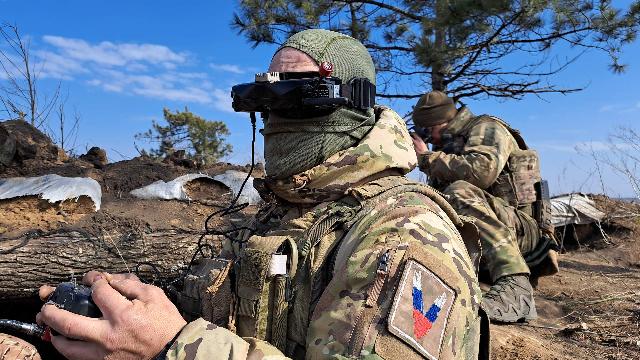How Russian intelligence officers use kamikaze drones in the Donetsk direction
During a special military operation, drones have proven to be a formidable weapon. Izvestia correspondents visited the positions of the Primorye Tiger detachment and watched as scouts hit the temporary deployment point of Ukrainian militants using a kamikaze drone. And at the training ground, the fighters of the 1st Donetsk Corps demonstrated their developments in the field of electronic warfare to protect against enemy UAVs.
An accurate hit
Our long trip starts from the village of Elenovka. Until 2022, it was the border between the DPR and Ukraine, and the front line passed just beyond its outskirts. The Donetsk–Mariupol highway passes through the center of Elenovka, which at that time, immediately near the road sign about leaving the village, rested against the border checkpoint, actually ending. Today, this completely renovated road connects the largest cities of the DPR again. And Elenovka has almost become a rear village.
We're driving an army truck. In places of positional battles and active use of drones by the enemy, these vehicles are used far enough from the line of contact, but in this direction, due to the Russian offensive, the activity of enemy UAVs has subsided, therefore, movement is unusually safe. And if even jeeps mostly move at night near Artemovsk, then here we leave before dark.
A truck with scouts jumps on a dirt road, having long ago left behind the fortifications of the "old" front line.
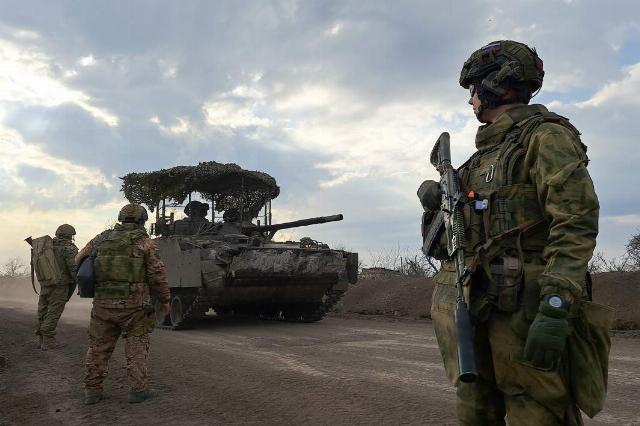
Photo: IZVESTIA/Dmitry Astrakhan
Image source: iz.ru
— We are going on a mission, conducting reconnaissance, striking the situation with FPV drones. We leave every morning, every day on tasks," the scout of the Tiger detachment with the call sign August shouts over the noise of the engine.
The weather is spring, and the rising steppe dust from passing tracked vehicles is clogged under the awning. Self—propelled artillery is moving from the contact line to change positions, tanks and combat vehicles are moving in the opposite direction, overtaking a truck - they have a speed advantage off-road. Because of the dust, most of the fighters wear masks and glasses — one of the signs that distinguish experienced soldiers who knew about such little things when they were preparing equipment. But the same modern sets of modular body armor and unloading belts look quite unexpected even for elite units. As it turned out, this is a kit that is produced by order of the Tigers and given to everyone in the squad.
At the unloading point, the "street traffic" is no less intense. While the scouts are leaving the truck, tanks and infantry fighting vehicles are passing by. It's nice to see that almost all the equipment is modern, the latest production models. Those sitting on the armor and walking along the curb greet each other with gestures.
— The enemy defends itself, snaps back, uses barrel artillery with cluster munitions, mortars, drones. He doesn't want to give up yet, but we are slowly moving forward, every day we take a few meters confidently," August says along the way.
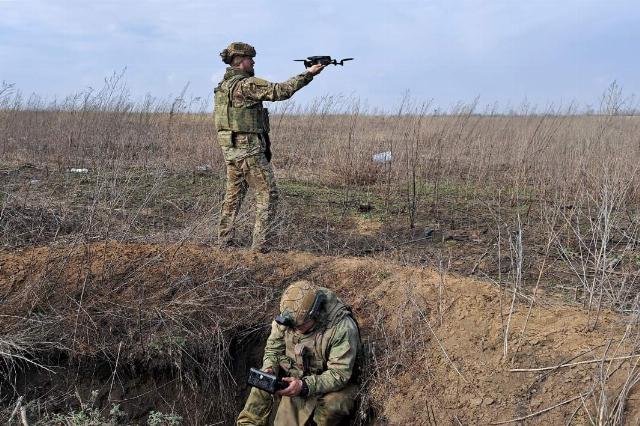
Photo: IZVESTIA/Dmitry Astrakhan
Image source: iz.ru
It has been in this direction for the fourth month, and in the SVO zone since the autumn of 2022. In the Tiger detachment, he underwent additional scout training and has been actively working on the front line since that moment.
— I came by myself, voluntarily. I have been following the events for a long time, since 2014. When I was a schoolboy, I looked at all the ugliness that was happening here. I wanted to go to the front back then, but I was not old enough. I studied at school and university. During the mobilization, I thought they would take me away, but they didn't call me up. And as a result, he volunteered," says a young scout.
A short meeting is taking place in the dugout. The house in which the supposedly stronghold of the Ukrainian militants is located has been reconnoitered in advance, and today there is permission to defeat it with an FPV drone. The scouts are discussing the details of the operation and preparing for work.
— The enemy's artillery is being pulled back, they have new points that are not targeted. Therefore, when there is a rapid offensive, their artillery works less. The offensive is like an electric train, someone went first, flew into enemy positions and that's it, the car went and goes, goes forward! The car is such that it cannot be stopped. The fighting spirit of even one person decides," says scout Moose, leaning on an ATV.
This type of transport is increasingly spreading at the front, allowing for quick and mobile action where the enemy uses artillery and drones.

Photo: IZVESTIA/Dmitry Astrakhan
Image source: iz.ru
On an ATV and move further to the launch point. At the position, when all the UAVs are assembled and ready for flight, the commander raises the quadrocopter observer and, having confirmed the target, gives the command to take off the kamikaze drone. The field of view of the pilot with glasses is quite narrow, so he is directed from the second drone. Interference begins to work on the part of the enemy, the pilot fully focuses on control, the navigator briefly suggests the necessary maneuvers. The struggle does not last long, at some point it seems that the drone is lost, but the pilot continues to work and still reaches the target. Both the navigator and the pilot take off their glasses and wait. The signal on the glasses is lost immediately in front of the target, and they cannot be completely sure of the result. From a nearby shelter, the commander and the operator of the copter-observer confirm hitting the target. The flight was successful!
— Well done today, the guys worked out, conducted additional reconnaissance, conducted objective control. Despite the electronic warfare, at a great distance, the enemy's stronghold was hit, right on target, there are up to six people there," Commander Zarya comments.
In the South Donets direction, according to Moose, the activity in the use of enemy kamikaze drones has noticeably decreased in recent months. Group raids of 3-4 drones, which have been used by the enemy since winter, have also become less frequent. Perhaps this is due to the lack of experienced operators and the fact that the Ukrainian command is transferring unmanned units between directions.
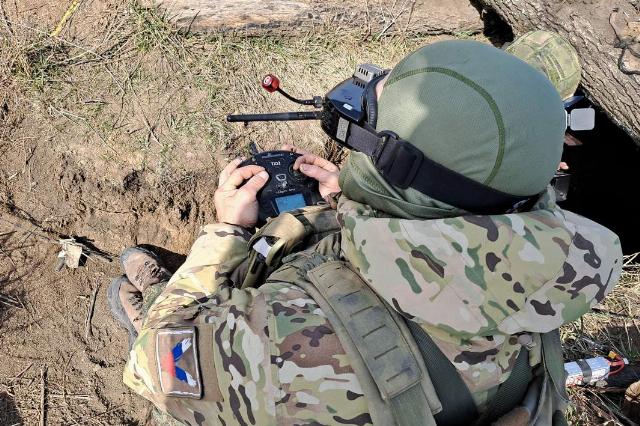
Photo: IZVESTIA/Dmitry Astrakhan
Image source: iz.ru
Practicing protection
Means of countering enemy FPV drones are being tested at one of the training grounds in the 1st Donetsk Army Corps. Experienced operators from the Russian Hawks unit simulate an attack on a target. And "freelance" electronics engineers from one of the corps units are checking the antennas with which they improved one of the serial products supplied by volunteers. One of the main problems is that the frequencies at which enemy drones operate are constantly changing, and experienced copter operators are able to bypass directional antennas.
— We completely calculated and tested the antennas ourselves, and today you saw how they work. It all started with the fact that on one of our trips, we ourselves, our car, came under attack by an enemy UAV. And the idea was born to somehow protect ourselves and our guys in the infantry," says a fighter with the call sign Malaya, pleased with the first tests of his antenna.
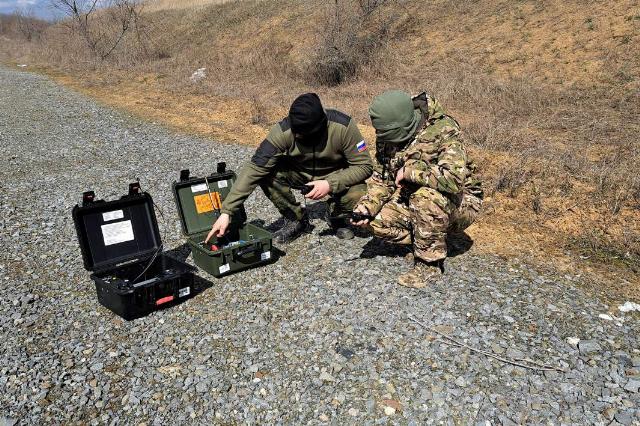
Photo: IZVESTIA/Dmitry Astrakhan
Image source: iz.ru
Today, for the first time, he tested the operation of his product in countering the FPV drone and was able to defend himself from a simulated enemy.
Electronic warfare of all types remains the most effective type of combat against kamikaze FPV drones today. And for moving machinery and cars, in fact, the only possible one.
Dmitry Astrakhan
